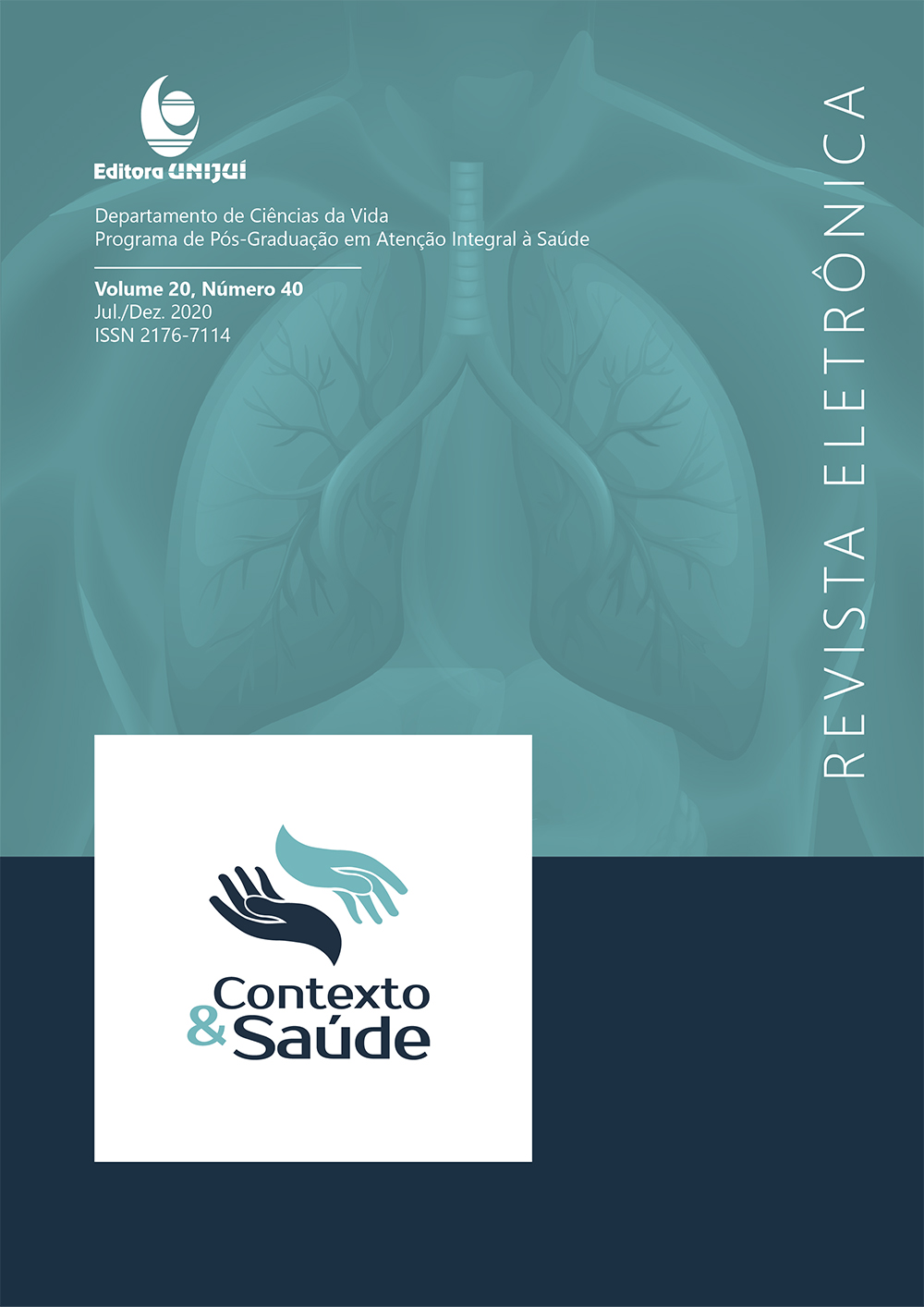RELAÇÃO DO AMBIENTE ESCOLAR E FAMILIAR COM O NÍVEL DE ATIVIDADE FÍSICA EM CRIANÇAS
DOI:
https://doi.org/10.21527/2176-7114.2020.40.75-84Palavras-chave:
Atividade Física, Crianças, Escola, FamíliaResumo
Objetivo: verificar a relação dos componentes do ambiente escolar e familiar com o nível de atividade física em crianças da rede municipal de ensino de Curitiba-PR. Métodos: Estudo descritivo correlacional, com delineamento transversal. A amostra consistiu de crianças de 9 e 10 anos (n=461; 51,19% meninos), com caráter probabilístico, selecionada em 10 escolas municipais da cidade de Curitiba-PR. Ambiente familiar, escolar e nível de atividade física foram avaliados por meio de questionários validados na literatura. Para a análise dos dados foi utilizado a estatística descritiva, e a regressão de Poisson. Resultados: O nível de atividade física das meninas pode ser maximizado pelo número de áreas para esporte na escola (RP:1,61; IC95%:1,01-2,57), presença de ≥ 2 espaços na residência para prática de atividade física (RP:1,23; IC95%: 1,09-1,40), morar em apartamento (RP:1,09; IC95%: 1,01-1,19) e receber estímulo dos pais (RP:1,10; IC95%: 1,01-1,20). Para meninos: receber sempre o apoio dos pais (assistir) para prática de atividade física (RP:1,13; IC95%:1,01-1,28), ter a presença do responsável ≥ 4 horas/dia (RP:1,11; IC95%: 1,02-1,19), e na escola possuir dinheiro exclusivamente para materiais de recreio (RP:1,38; IC95%:1,01-1,91), foram associadas positivamente com níveis mais altos de atividade física. Conclusão: Componentes do ambiente escolar e familiar mostraram uma maior probabilidade de crianças, entre 9 e 10 anos, serem classificadas como sendo suficientemente ativas. Sugere-se estudos com os dois ambientes (familiar e escolar) em conjunto visando ampliar o conhecimento sobre o tema.
Downloads
Publicado
Como Citar
Edição
Seção
Licença
Ao publicar na Revista Contexto & Saúde, os autores concordam com os seguintes termos:
Os trabalhos seguem a licença Creative Commons Atribuição 4.0 Internacional (CC BY 4.0), que permite:
Compartilhar — copiar e redistribuir o material em qualquer meio ou formato;
Adaptar — remixar, transformar e criar a partir do material para qualquer fim, inclusive comercial.
Essas permissões são irrevogáveis, desde que respeitados os seguintes termos:
Atribuição — os autores devem ser devidamente creditados, com link para a licença e indicação de eventuais alterações realizadas.
Sem restrições adicionais — não podem ser aplicadas condições legais ou tecnológicas que restrinjam o uso permitido pela licença.
Avisos:
A licença não se aplica a elementos em domínio público ou cobertos por exceções legais.
A licença não garante todos os direitos necessários para usos específicos (ex.: direitos de imagem, privacidade ou morais).
A revista não se responsabiliza pelas opiniões expressas nos artigos, que são de exclusiva responsabilidade dos autores. O Editor, com o apoio do Comitê Editorial, reserva-se o direito de sugerir ou solicitar modificações quando necessário.
Somente serão aceitos artigos científicos originais, com resultados de pesquisas de interesse que não tenham sido publicados nem submetidos simultaneamente a outro periódico com o mesmo objetivo.
A menção a marcas comerciais ou produtos específicos destina-se apenas à identificação, sem qualquer vínculo promocional por parte dos autores ou da revista.
Contrato de Licença (para artigos publicados a partir de setembro/2025): Os autores mantém os direitos autorais sobre seu artigo, e concedem à Revista Contexto & Saúde o direito de primeira publicação.

